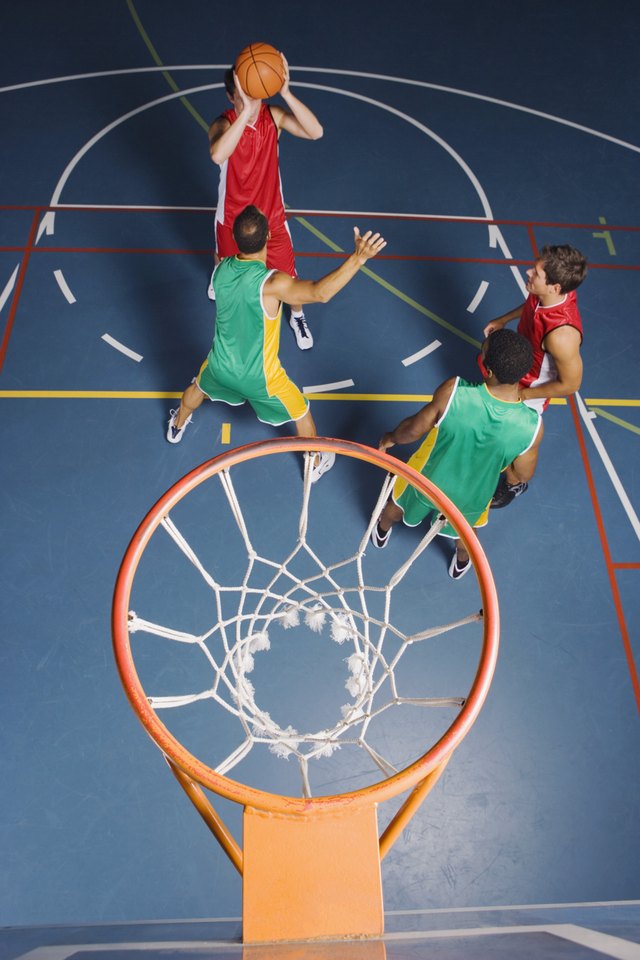NCAA Basketball Ejection Rules

The NCAA basketball rules are designed to be enforced by basketball officials, allowing a safe, fair game for all participants The punishments an official can administer vary in severity depending on the circumstances. The most severe penalty an official can impose during game play is an ejection, or complete removal from play. Although usually ejections are imposed upon active players, other team members can be ejected, including coaches, mascots and bench personnel.
What Is Ejection?
In NCAA basketball, an official may disqualify a player from participating in the remainder of the game. This disqualification may occur at any time before or during play, as a response to the player's failure to follow NCAA rules. Furthermore, an official may choose to eject a player from the game. An ejection disqualifies the player from participation and also requires him to leave the playing area and remain in the locker room until the end of the game.
Multiple Fouls
During a game, a team member incurs technical fouls when he breaks a rule in or out of play. Class A technical fouls are called when a player engages in unsportsmanlike conduct without physical contact, such as excessive profanity, taunting or verbal abuse. A team member is automatically ejected upon receiving his second Class A foul. Class B technical fouls are less severe than Class A technical fouls and consist of infractions that are not unsportsmanlike. Class B technical fouls may include interfering with the basket or backboard, purposeful delay, possession of tobacco or other rule-breaking. After a player receives his third Class B technical foul, he is ejected from the game. A player may also be automatically ejected for receiving one Class A and two Class B fouls.
Single Fouls
Some severe fouls warrant an automatic ejection on the first offense. A flagrant 2 personal foul is described in the "NCAA 2011-12 and 2012-13 Basketball Handbook" as involving "contact with an opponent that is not only excessive, but also severe or extreme while the ball is live." Such a foul may result in significant injury, or severe disruption of play. A flagrant 2 technical foul does not require physical contact or a live ball. An official may also call a flagrant 2 technical foul when a team member is excessively profane or abusive. If a disqualified player attempts to return to the court, he will be charged with a flagrant 2 technical foul and ejected, while the coach will receive a Class A technical foul.
Fights
When a team member attempts to strike another individual in a confrontational manner, particularly with a closed fist, he has become involved in a fight, regardless of whether contact is achieved. During a fight, others are considered participants in the fight if they physically strike or attempt to strike another player, initiate verbal abuse or taunting or leave the bench during the duration of the fight. A fight may occur when the ball is live or dead. Officials will determine which individuals were involved in a fight and eject all participants from the game.
References
Writer Bio
Mary MacIntosh has been writing professionally since 2007, contributing articles to "The California Tech" and serving as an editor for the "Biweekly Frink Digest." She is pursuing a Bachelor of Science in computational neuroscience at the California Institute of Technology.
